These homemade hummingbird food recipes (plus time- and money-saving shortcuts) will have hummingbirds swarming to your feeder in no time!
I was at the local hardware store recently to buy a new hummingbird feeder when I noticed the price on a 32 ounce bottle of hummingbird nectar: $11.99. Admittedly, this store isn’t the cheapest in town, but it still surprised me to see a bottle of sugar water selling for that much.
My husband and I have been making our own hummingbird food for the past few years, and we’ve learned a few shortcuts along the way—on both the nectar-making and feeder-refilling sides of the equation.
So let’s get started with the recipe we use for our homemade hummingbird food, and then I’ll share our best tips for simplifying the whole process.
Homemade Hummingbird Food: 2 Easy Recipes
This is the hummingbird food recipe I got from my awesome stepmother. The hummingbirds that swarm (literally) our feeders each summer go through nearly 2 gallons of this stuff each week!
Homemade Hummingbird Food Recipe (Original Version)
8 c. white sugar
24 c. water
Combine sugar and water in a large saucepot—you’ll want it to hold 8 quarts at the very least. Larger is better. Cook over high heat until the water has boiled and the sugar has dissolved, stirring regularly. Remove from heat. Cover to keep out the dust and bugs (we’re being realistic, right?) while the liquid comes to room temperature. Makes approximately 2 gallons.
Homemade Hummingbird Food Recipe (Quick Version)
After we made the above recipe as written several times, my husband came up with a nifty shortcut, which works for us from a mold/bacteria standpoint because we go through the liquid very quickly. Rather than adding all the water to the mixture at the beginning of the process and then having to wait for the whole 2 gallons to cool, he tried making a 1:1 simple syrup of 8 cups sugar to 8 cups water. Then, after heating and stirring that mixture until the sugar dissolved, he added in 16 cups of very cold water. This made it possible to fill the feeders with the homemade hummingbird food almost instantly, saved on energy since he was heating less liquid—and, needless to say, is how we made our hummingbird nectar from then on.
You May Also Enjoy:
“Homemade Hummingbird Food: Why a 1:3 Sugar-to-Water Ratio Is Best”
“19 Benefits of Hibiscus: Blood Pressure Regulator, Cancer Fighter, Liver Protector, and Much More!”
Here’s the quick version in recipe format:
8 c. white sugar
8 c. water + 16 c. very cold water
Combine sugar and 8 cups water in a large saucepot. Cook over medium-high heat, stirring regularly, until the sugar has dissolved. Remove from heat. Stir in 16 cups of very cold water. This should cool the liquid enough so that you can use it to refill your feeders immediately.
We use this recipe to fill our three 72 ounce feeders, and usually end up with a little leftover. To save the rest of the liquid for the next week’s feeder refill, we simply pour it into a mason jar, screw on the lid, and store it in the refrigerator.
Please note that not boiling the mixture so we can use it immediately works for us because we go through the liquid very quickly. However, if your feeders don’t get drained as quickly, I recommend going ahead and boiling the mixture before use to help prevent mold and bacterial contamination.
Save Time & Money With These Shortcuts
Between our kids, our homestead, and our jobs, my husband and I stay pretty busy—so I’m always looking for ways to make things around the house just a little bit more efficient.
Make Faster, Cheaper Homemade Hummingbird Food
Since we make a large batch of hummingbird food at least once a week, I’ve come up with a trick that shortens the amount of time it takes (and saves a little money in the process):
- Buy white sugar in the large, 25-pound bags to reduce the price per pound.
- Take gallon zipper-lock bags (I use the store brand, and the regular—not freezer—variety) and measure 8 cups of white sugar into each one of them until you’ve filled 6 bags. (You should end up with about 2 cups of sugar left in the big bag. I just add this to my sugar canister so I can go ahead and be done with the large sugar bag.)
- Write the recipe ratio (“8 c. sugar to 24 c. water”) on the front of each zipper-lock bag. (This is the sort of simple recipe I think I’ll remember later, but then have to waste time looking up when I can’t precisely recall it the following week.)
- Store these bags of sugar in your pantry until you need to grab one to make another batch of hummingbird food.
- When you empty a gallon bag, simply place it back in storage with the other zipper-lock bags of sugar so that you can reuse it when it’s time to distribute another 25-pound bag of sugar.
Cut Down on Time and Mess When Refilling Your Hummingbird Feeders
Refilling feeders with homemade hummingbird food can be time-consuming and messy—but it doesn’t have to be.
To speed up the process of refilling multiple hummingbird feeders and to reduce spillage (and the stickiness that comes with it), I use two simple tools: a plastic pitcher and a funnel.
After making a batch of homemade hummingbird food, I pour the liquid directly into the plastic pitcher. If you’ve got a really steady hand, you could stop here and just refill the hummingbird feeders directly from the pitcher spout.
You May Also Enjoy:
“Calendula: Lymph Mover, Detoxifier, Cancer Fighter, and Skin Beautifier”
To make things even easier, though, I grab a medium-sized funnel, insert it into the refill opening of the hummingbird feeder, and then pour from the pitcher into the funnel until the feeder is refilled. I usually do this over the kitchen sink, just in case I misjudge and overfill one of the feeders.
This method is faster and less messy and wasteful than other refill methods I’ve tried, and it uses tools you’ve already got in your kitchen. What’s not to love?
Cost Comparison: Let’s Do the Math
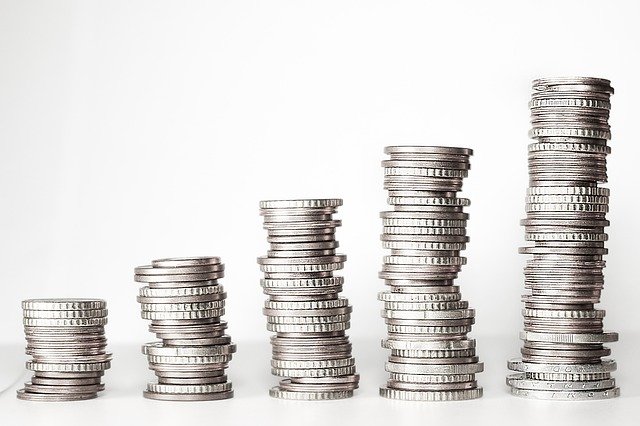
Image by Kevin Schneider from Pixabay
Now that you know how to make your own homemade hummingbird food—and how to simplify the whole process from saucepot to feeder as much as possible—let’s go back to that 32-ounce bottle of hummingbird nectar I found on the shelf of the local hardware store for $11.99. That’s actually more than I spend on a 25-pound bag of white sugar at our local grocery store, so let’s do the math:
The recipe in this article makes 2 gallons—or 256 U.S. fluid ounces of homemade hummingbird food. At 32 ounces, that store-bought bottle of hummingbird nectar is 1/4 of a U.S. liquid gallon. We’d need to buy 8 of those bottles to end up with the same amount our recipe produces—at a whopping cost of $95.92, plus tax!
On the other hand, a 25-pound bag of sugar costs me $11. There are approximately 50 cups of sugar in a 25-pound bag, which works out to a cost of 22 cents per cup. The above recipe uses 8 cups of sugar to make 2 gallons, for a total sugar cost of $1.76.
You May Also Enjoy:
“12 Uses for Rose Petals—From the Kitchen to the Boudoir (With Recipes)”
If we break it down even further, we see that we can make 1/4 gallon (32 ounces) of homemade hummingbird food for 44 cents. Even when you factor in the cost of the water and energy used to make the recipe, you’ll almost certainly end up spending under $1 per gallon.
Since we go through about 2 gallons of homemade hummingbird food per week, we’re spending between $8 and $10 on it per month. In our opinion, that’s a small price to pay for the enjoyment we get from watching those wonderful birds—and a much smaller price than we’d pay if we bought our hummingbird nectar pre-made from the store!
What Do You Think?
What’s your favorite recipe for homemade hummingbird food—and how do you simplify the process of making hummingbird food and refilling feeders?
Let me know in the comments!
The Grow Network is a participant in the Amazon Services LLC Associates Program, an affiliate program designed to provide a means for our team to earn fees for recommending our favorite products! We may earn a small commission, at no additional cost to you, should you purchase an item after clicking one of our links. Thanks for supporting TGN!
Merin Porter is a writer, homesteader, Master Gardener Volunteer—and The Grow Network’s Director of Editorial Content. When she’s not busy dotting i’s and crossing t’s for TGN’s communication efforts, she enjoys spending time with her husband and children, hiking, skiing, volunteering for local gardening organizations, tending to her flock of heritage-breed chickens, and continuing her pursuit of the perfect homegrown tomato.
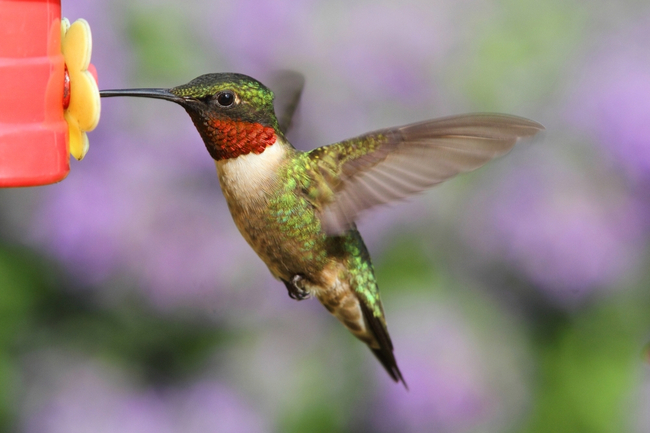
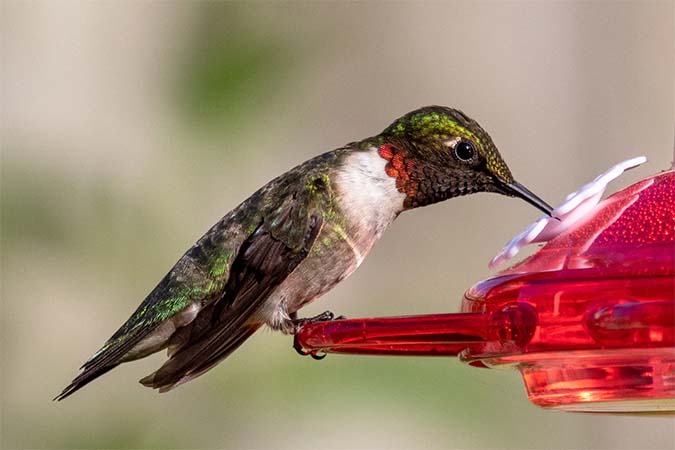
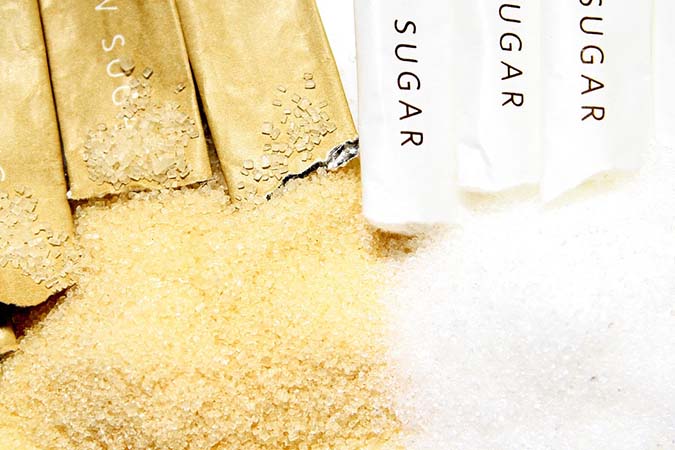
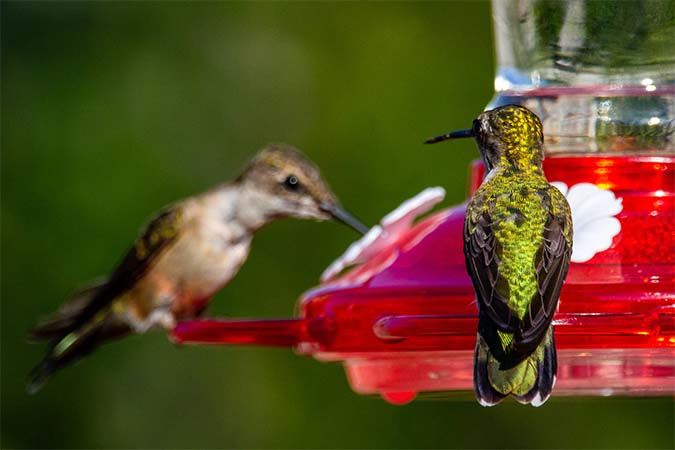







COMMENTS(9)
We bought a new hummingbird feeder just this week. We too looked at nectar at the store, and even though it’s now available without coloring, it still contains preservatives and whatnot, so I opted to make my own at home. Waiting for it to cool was the hardest part. We put the feeder out empty until nectar was ready and the birds came looking for food anyway! Now that we have it out it’s funny to watch, some birds know exactly how to use it and others fly around trying to drink out of the seams in the bottom of the feeder. It’s set up near a window and my cats love to watch them and the birds at the seed feeder next to it.
I’ll bet your cats do love to sit at that window! 🙂 I read that the red color is actually what attracts the hummingbirds, so if your feeder has red on it (like ours do), that may be why they started trying the feeder before there was even any nectar in it…. Actually, I just realized as I was typing this that the red color of my tomatoes may be why I’ve been finding some little hummingbird-sized holes in some of them!
This is a definite improvement over the hummingbird nectar that is sold in stores, and is good for times when natural food sources are scarce. I think a healthier alternative is to plant a variety of flowers that hummingbirds like that will bloom throughout the growing season.
One interesting thing I have found about hummingbirds is that they are very territorial. When one is feeding and another happens to come along, the dominant bird will chase the other one away, even though there is plenty of food to go around.
Absolutely, Deborah! I totally agree. We have a wide range of flowers on our homestead, too, and we see all sorts of pollinators on them over the range of months when snow isn’t covering the ground here. I admit that I love being able to watch the hummingbirds on our patio, though — there’s just something about having all of those little beauties flitting around. Puts a smile on my face every time!
That’s a lot of sugar! I have a small feeder. My recipe I do 1c water and 1/4c of sugar.
Thanks for your comment, Jayne! Our recipe came from my dad and step-mom, who absolutely love hummingbirds and keep multiple (x multiple! 🙂 ) feeders on their homestead in New Mexico. We’ve had great success with it, too, but I may have to try your recipe to see what kind of a reception our hummers give it…. Sure appreciate you sharing!
We’ve always used 1 part sugar to 4 parts water, so like jaynecambra above, 1/4 c sugar to 1 c water, or 1 c sugar to 1 qt of water, or 4 c sugar to 1 gallon of water. At this concentration you do not have to heat the water to get the sugar to dissolve, nor do you have to wait for it to cool down. I refill my feeders in less than 5 minutes, including rinsing them out before refilling.
Oh wow, Lois, that’s really fast! I just mentioned this recipe to my husband, and since we’ve got three feeders, I think we might try a little comparison test — filling one with the lower-sugar recipe and two with our recipe — and just see what happens. Thanks so much for your comment!
I have wondered about the advisability of feeding the birds sugar water… Since this white sugar (often made from genetically modified sugar beets) is not good for us, could it possibly be good for the birds either?